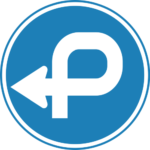功不可沒的標誌 Signage – A Great Contributor
(English version below)
小編曾於2009年到訪一個名叫「Nordlingen」的德國小鎮,其特色是被完整的城牆所包圍。當小編參觀完城牆上的走道後,頓時人有三急,於是沿著寫有「Toilet」字眼的指示牌進發。但當小編走到洗手間所在地,一件趣事便發生了。當時有兩扇門,上面只是寫有「D」和「H」,在無法使用即時網上搜索的情況下,我們根本分不清哪個是男用,哪個是女用!所以說,標誌的貢獻可真不少,它透過通俗易懂的圖像,就能讓來自不同背景的人明白其所表達的意思,而毋須額外學習當地語言,造成困惑。
P.S. 大家猜猜哪個是男用的,哪個是女用的吧
.
.
.
.
.
.
.
.
.
.
.
.
.
.
.
.
.
H = Herren (男性); D = Damen (女性)。若然憑著「男左女右」的原則去選便錯了! 另外,即使有完整單詞,也很可能會選錯:”Herren” 中有“Her”不是女性, 而”Damen”中有“Men”但不是男性,可真有趣呀!
.
.
.
.
.
.
.
.
.
.
.
.
.
.
.
.
H = Herren (男性); D = Damen (女性)。若然憑著「男左女右」的原則去選便錯了! 另外,即使有完整單詞,也很可能會選錯:”Herren” 中有“Her”不是女性, 而”Damen”中有“Men”但不是男性,可真有趣呀!
========================================================================
I have visited a German town called Nordlingen in 2009. It
has an interesting feature that the whole town is surrounded by a complete
circle wall. I recalled that I wanted to go to toilet after visiting the city
wall. Thus, I followed the ‘Toilet’ sign and went downstairs. A great challenge
appeared when I reached to the toilet. There are two doors: There is a big “D”
on one of them and a big “H” on the other. Since I didn’t have Internet access
to search for the meaning of them, we couldn’t figure out which is for male and
which is for female! That’s to say, the contribution of signage can’t be
neglected. It uses the easy-understanding graphics to express meanings to
people with different backgrounds clearly and they don’t necessarily need to
learn the local language and make confusions.
has an interesting feature that the whole town is surrounded by a complete
circle wall. I recalled that I wanted to go to toilet after visiting the city
wall. Thus, I followed the ‘Toilet’ sign and went downstairs. A great challenge
appeared when I reached to the toilet. There are two doors: There is a big “D”
on one of them and a big “H” on the other. Since I didn’t have Internet access
to search for the meaning of them, we couldn’t figure out which is for male and
which is for female! That’s to say, the contribution of signage can’t be
neglected. It uses the easy-understanding graphics to express meanings to
people with different backgrounds clearly and they don’t necessarily need to
learn the local language and make confusions.
P.S. Let’s guess which’s for male, and which’s for female 😛
.
.
.
.
.
.
.
.
.
.
.
.
.
.
.
.
.
.
.
.
.
.
.
.
.
.
.
.
.
.
.
.
.
H = Herren (Male) and D = Damen (Female). It
would be so wrong if we guess “Herren” as ‘female’ because there is
the word ‘Her’ inside the term and ‘Damen’ as ‘male’ because of ‘men’ LOL
would be so wrong if we guess “Herren” as ‘female’ because there is
the word ‘Her’ inside the term and ‘Damen’ as ‘male’ because of ‘men’ LOL
(Visited 107 times, 1 visits today)



